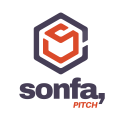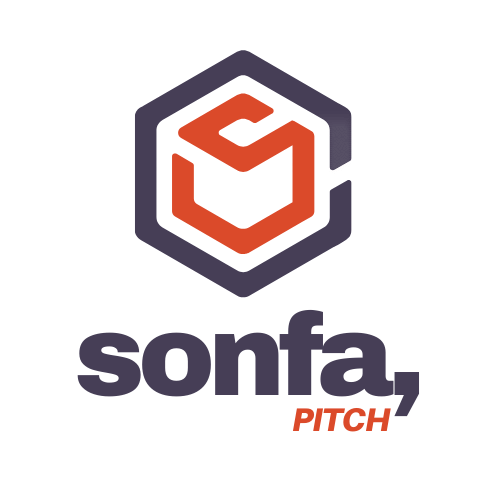The jazz scene in my hometown of Manchester is open-minded and always evolving, but I discovered the genre while making hip-hop instrumentals and passing them to friends. I was listening to J Dilla, Madlib and Pete Rock, tracing those samples back to Ahmad Jamal, Herbie Hancock and Bill Evans. Jazz crept in that way – through the sampler. Eventually, I stopped digging for other people’s records and thought, ‘What if I could just record the thing I wanted to sample?’
That idea became the heart of my new album Find a Way. I wasn’t chasing a “jazz record” or an “electronic record”; instead, I took elements from those genres and discovered that there’s a lot more crossover in improvisation and music production than I first thought.
Capturing raw material
Most tracks started the same way: I’d sit at the Rhodes Mk1 that I restored, or my Yamaha U1, hit record in Ableton Live and play whatever came to mind for a long stretch. Afterwards, I’d pull out the phrases that felt good and build around them.
My Prophet Rev2, meanwhile, sparked the title track. I set up a repeating sequence with slow modulation so it never felt static, then wrote harmony against that pattern. Ableton’s Session View makes that approach natural, so I could launch ideas, record everything into Arrangement, and improvise first, edit later.

Why drums took over
I recorded live drums for the album (the drummer, Oscar Ogden, was incredible), but once I began shaping tracks, I found myself programming the drum parts. Not to replace the human element, but to explore a more intricate, loop-based language with its own nuance. I still used bits of the live takes, resampled and chopped, yet programming became the focus
My main engine was XLN Audio’s Addictive Drums. The Vintage Dead and Dry kits sit perfectly with the Rhodes, piano and Prophet parts, giving that tight, pitched, present tone. I’d choose something like the Ludwig Blue Oyster kick, tweak EQ just a touch, and leave character shaping to Live – Goodhertz Tupe for harmonic weight, Soundtoys Decapitator for bite, and a UAD Pultec for overall tone. Keeping the same chain across tracks made it feel like one drummer moving between rooms.
For me, hi-hats are where so much feel and groove live. I’ll alternate articulations or vary velocity and timing manually so no two hits are identical. In my How I Actually Create Good Drums video, I demonstrate that process of going hit-by-hit until it grooves. Ableton’s MIDI editor gives you control over velocity and timing, and if you want a faster starting point, the Groove Pool or Velocity Device can add subtle micro-variations before you refine things by hand

Drums that follow the music
Rather than forcing the music to fit the drums, I let the drums follow the phrasing. If a piano stab lands early, I nudge the snare. If a trumpet phrase needs space, I mute the kick. It’s not an imitation of a live drummer but a composition shaped by performance.
During a session with trumpeter Aaron Wood in Huddersfield, we kept it simple: trumpet, piano, Rhodes, laptop. The takes had that “could-fall-apart” excitement. In Live, I’d stretch or chop just enough to keep that energy – following his phrases with a snare-snare-snare, or thinning the kit so his tone could breathe. Because everything was in Session View, I could record those edits in real time and keep the interplay intact.

Ableton has several features that genuinely suit an improviser’s mindset, and most of them shaped how I made Find a Way. Capture MIDI has become essential when I’m working with software instruments – it rescues ideas I’ve played but forgotten to record and turns those spontaneous moments into material I can actually use. When I’m playing hardware like the Nord Piano 5 or Prophet, those ideas usually come in as audio, but the same “capture first” mentality still applies: I record long passes, then pull out phrases that feel alive and build from there. Recording from Session View into Arrangement keeps that performance-led approach going. Instead of programming parts bar by bar, I can “play” the arrangement in real time and let the feel dictate the structure. And when I move into editing, Live’s Groove Pool is a quick way to introduce subtle timing and velocity variations before I refine everything by hand. Push 3, especially with MPE and standalone mode, has become part of that workflow too; I can sketch expressive ideas away from the laptop, then drop them straight back into Live when I’m ready to shape the track. All of these tools support a process where improvisation leads and production follows, which is exactly how this record came together.
Add my regular front-end – Soyuz 013 pair for upright piano, Genelec 8040s for monitoring, and AIAIAI TMA-2 wireless headphones for cable-free tracking – and it’s a setup built for spontaneity.

Imperfection as feel
The temptation in-the-box is to try and polish everything, but I try not to. I like the “accidents” that can transform the feel of a song, like a clap that lands slightly late, a tambourine tucked behind the snare, a one-off foot-close hat. Sometimes I’ll delay a layered clap by a few milliseconds so it “answers” the snare rather than lands on it.
One thing that’s helped me bring more life into programmed music is starting with a long, unbroken take before I even think about drums. I sit at the piano or Rhodes, record a long take, and let the harmonic phrasing lead. That performance becomes the structure the drums follow.
I keep my drum chain consistent across tracks and focus on small timing and velocity shifts rather than heavy edits. Those little movements are usually where the human feel sits.
And instead of programming an arrangement, I’ll perform it. Recording a pass from Session View into Arrangement feels like directing a band responding in real time and shaping the track as it unfolds.
This workflow helps me keep programmed music connected to the instinctive, improvisational side of playing.

Closing thought
Working this way made it easier to enter a flow state. I found myself sitting at the piano or Rhodes most days, pressing record and letting those long improvised passes become raw material. Over time they felt almost like daily sketches — loose ideas I could return to, shape, and eventually build full tracks from.
Ableton began to feel less like a DAW and more like another instrument in that process, giving me space to follow the phrasing wherever it wanted to go. Keeping consistent chains on each instrument meant the mix developed as I played, which freed up headspace and let the music unfold without second-guessing.
Listening back to Find a Way, it feels honest. I can hear those early sketches in the final tracks — the spontaneity in the keys, the interplay with the drums, the moments we captured with the live players we did bring in. I’m proud of how we arrived here, and it’s a workflow I’ll carry forward.
If you want to hear how that approach sounds, I’ve broken down the Find a Way sessions and workflow on my YouTube channel.





